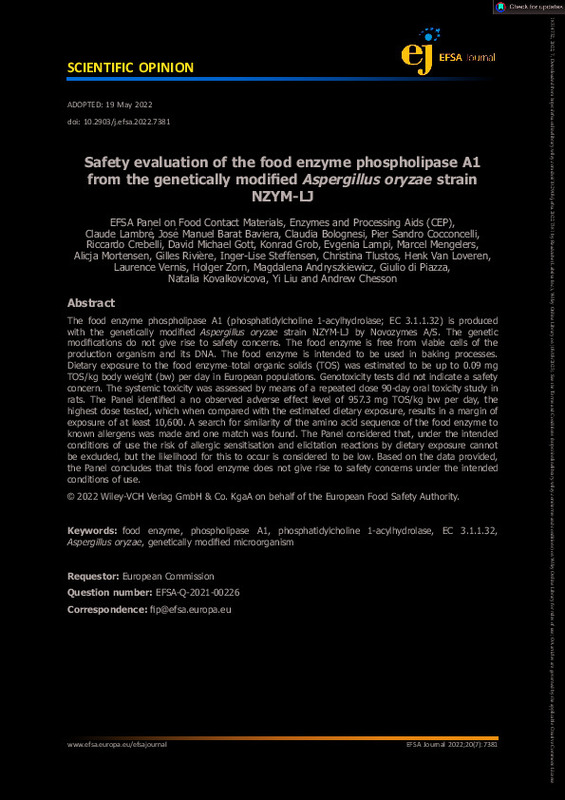JavaScript is disabled for your browser. Some features of this site may not work without it.
Buscar en RiuNet
Listar
Mi cuenta
Estadísticas
Ayuda RiuNet
Admin. UPV
Safety evaluation of the food enzyme phospholipase A1 from the genetically modified Aspergillus oryzae strain NZYM-LJ
Mostrar el registro completo del ítem
Lambré, C.; Barat Baviera, JM.; Bolognesi, C.; Cocconcelli, PS.; Crebelli, R.; Gott, DM.; Grob, K.... (2022). Safety evaluation of the food enzyme phospholipase A1 from the genetically modified Aspergillus oryzae strain NZYM-LJ. EFSA Journal. 20(7):1-16. https://doi.org/10.2903/j.efsa.2022.7381
Por favor, use este identificador para citar o enlazar este ítem: http://hdl.handle.net/10251/194005
Ficheros en el ítem
Metadatos del ítem
| Título: | Safety evaluation of the food enzyme phospholipase A1 from the genetically modified Aspergillus oryzae strain NZYM-LJ | |
| Autor: | Lambré, Claude Bolognesi, Claudia Cocconcelli, Pier Sandro Crebelli, Riccardo Gott, David Michael Grob, Konrad Lampi, Evgenia Mengelers, Marcel Mortensen, Alicja Rivière, Gilles Steffensen, Inger-Lise Tlustos, Christina van Loveren, Henk Vernis, Laurence | |
| Entidad UPV: |
|
|
| Fecha difusión: |
|
|
| Resumen: |
[EN] The food enzyme phospholipase A1 (phosphatidylcholine 1-acylhydrolase; EC 3.1.1.32) is produced with the genetically modified Aspergillus oryzae strain NZYM-LJ by Novozymes A/S. The genetic modifications do not give ...[+]
|
|
| Palabras clave: |
|
|
| Derechos de uso: | Reconocimiento - Sin obra derivada (by-nd) | |
| Fuente: |
|
|
| DOI: |
|
|
| Editorial: |
|
|
| Versión del editor: | https://doi.org/10.2903/j.efsa.2022.7381 | |
| Agradecimientos: |
|
|
| Tipo: |
|









